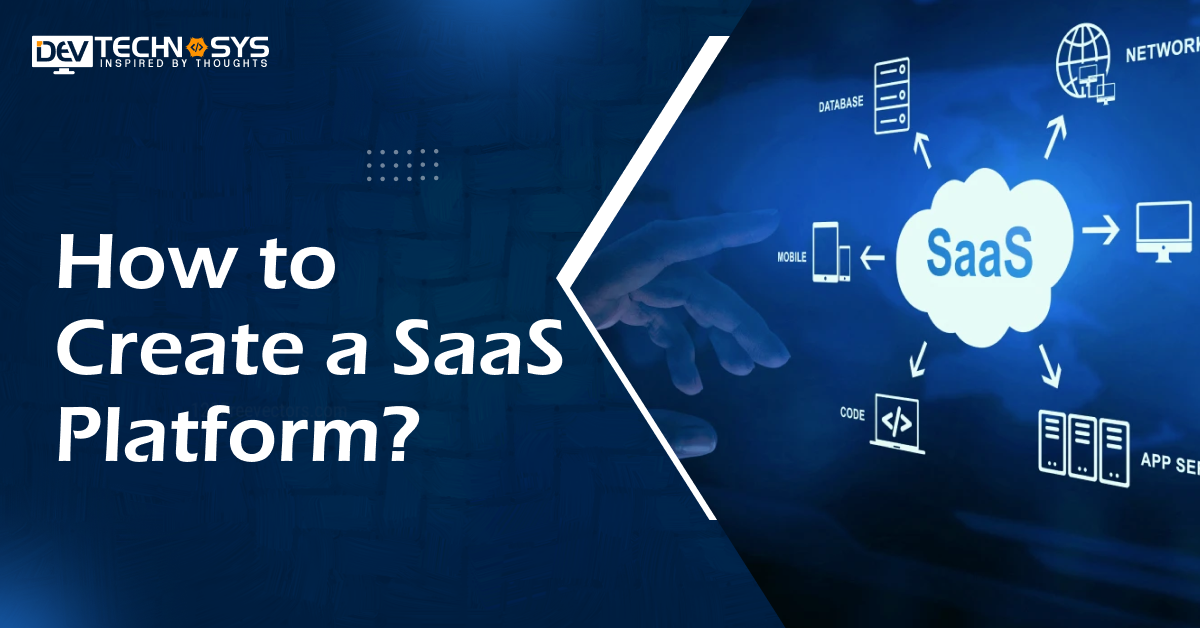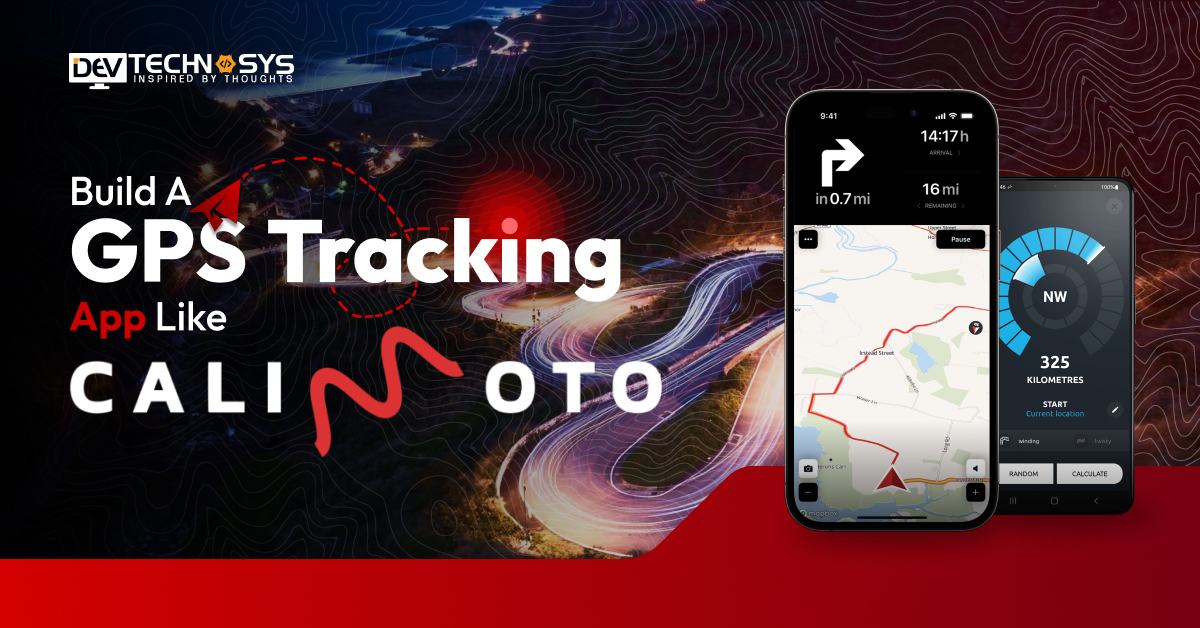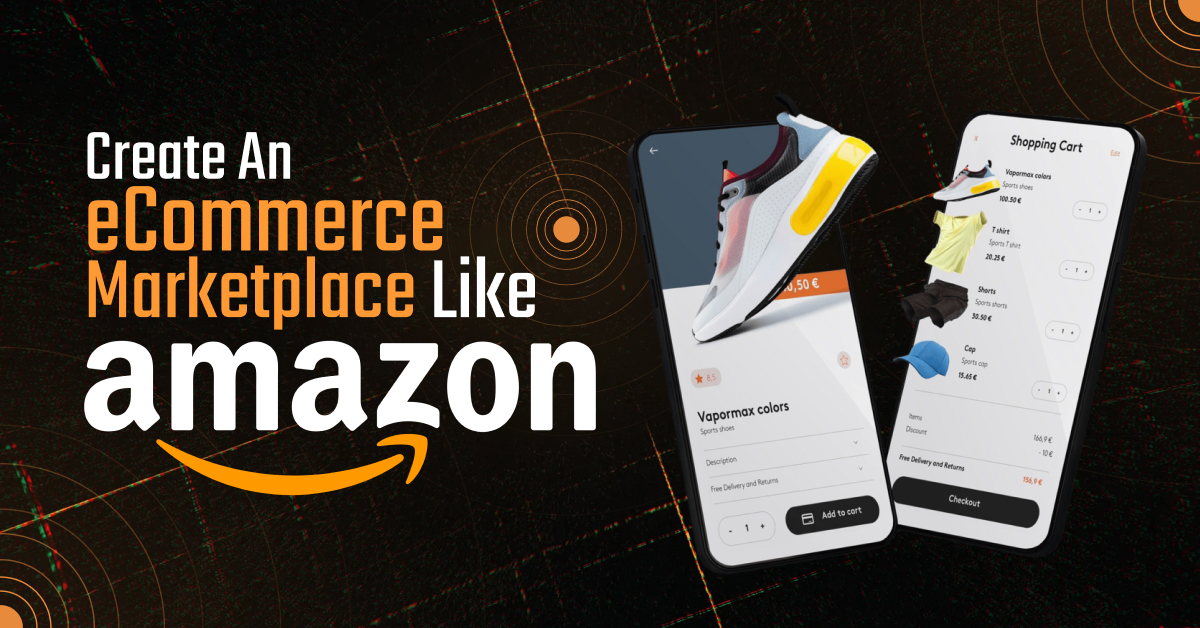“Software as a Service”
In the 21st century, all businessmen want their business forms to be maintained, and if they have to access some business data or process, it can be done with one click. Every business and organization needs a cloud for fast accessibility and a secure working process. So, here we come with one of the most used and popular cloud computing platforms: SaaS.
According to the study, the global cloud computing market was valued at $626.3 billion in 2023 and is projected to grow to around $1,266 billion by the end of 2028 at a CAGR of 15%.
Showing this data can reveals that investing in the Saas platform is one of the most lucrative opportunity for entrepreneurs to grow their businesses.
In this blog, we will discuss how to create a Saas Platform and how many different types of Saas platforms.
Connected with us!
Quick Summary: In this blog, we will explore how to create a SaaS platform and its features, cost, robust development stage, and different types of SaaS platforms.
What Is A SaaS Platform?
A Software-as-a-Service (SaaS) platform is a cloud-based model that enables users to access applications by paying a fee over the Internet. Users can access a wide variety of applications without installing them on their computers or internet-connected devices. The best examples of SaaS-based applications are office tools, email, and calendaring. This platform allows users to access data from anywhere on an internet-connected device, and users pay only for what they use. To build a Saas platform, you must contact a custom software development company for reliable cloud services.
- Users do not need to maintain the application on the SaaS platform, which can be accessed via a web browser.
- SaaS providers update the software to the latest version without the users manually installing it.
- The SaaS platform offers various subscription plans for users to access the software and applications by paying monthly, quarterly, and yearly fees.
- This platform increases remote working by allowing global access to software and applications and enhances business operations.
Types of SaaS Platform
There are various types of SaaS platforms, including multiple industries or cloud services sectors. Cloud services help businesses save more on purchasing individual applications. With the help of cloud services, businesses can access software or applications without installing and maintaining them. So, here is the list of the different types of SaaS Platforms:
- CRM SaaS
- ERP SaaS
- HRM SaaS
- File Sharing SaaS
- Communication SaaS
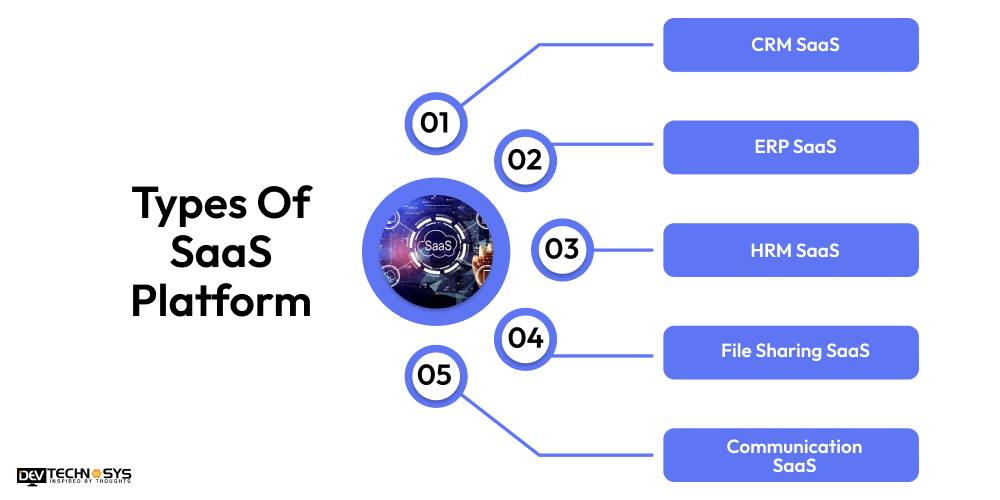
1. CRM SaaS
Let’s start exploring CRM(Customer Relational Management) SaaS. This platform helps businesses manage customer relationships and track their business growth. It also provides ideas for improvement and offers marketing, sales, and customer services. Most businesses are stuck on one question: Why create SaaS? The answer is that it provides marketing automation tools to improve overall sales.
2. ERP SaaS
Let’s move to the second type of SaaS platform, Enterprise Resource Planning(ERP) SaaS provides basic business management process to improve the overall management. It provides supply chain, finance management, human resource management, inventory management, and order management. This platform can easily manage the accounts of businesses and reduce the human error in accounting.
3. HRM SaaS
This is one of the most vital cloud service that helps businesses to manage the employee’s data. Human Resource Management(HRM) allows business to handle the employee payroll, performance, attendance, short leaves, recruitment, and administration benefits. It can handle the employee’s valuable data and it can only be accessed by the admin or user.
4. File Sharing SaaS
This fourth type of SaaS platform allows users or businesses to share, manage, store, and access files via internet-connected devices. Users can access these data over the internet from anywhere and anytime. Admin can set the general accessibility and allow only limited team members to securely access the data.
5. Communication SaaS
Let’s come to the last type of SaaS platform, which provides better communication connectivity and enhances communication channels. It provides communication services such as video conferencing, real-time chats, instant messaging, webinars, screen sharing, virtual meetings, and file sharing. Zoom and Slack are the most popular examples of Communication SaaS.
Why Is The SaaS Platform The Key To Rapid Business Growth?
SaaS platforms offer a wide range of cloud services that help businesses drive rapid growth, enhance security measures, and access data globally over the Internet. These cloud-based services provide flexibility and convenience to businesses and are able to store sensitive information in cloud storage. So, here is the list of the key benefits of the next wave of SaaS development:
- Flexible and Scalable
- Auto Update and Maintenance
- Cost-Efficiency
- Accessibility
- Data Insights
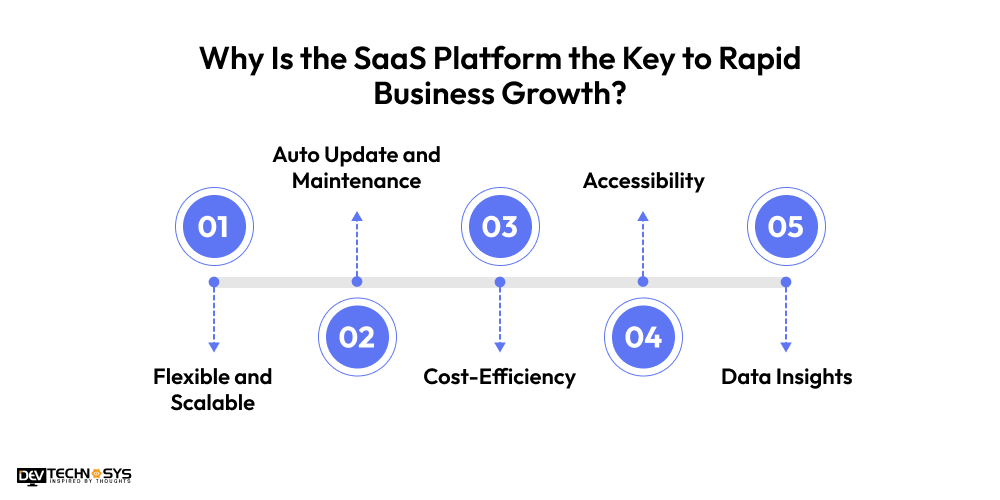
1. Flexible and Scalable
SaaS platforms are flexible. Users can use any application without installing it on a computer or any internet-connected device. They provide a basic subscription plan with a small monthly fee and allow users to access cloud services, applications, and software without any storage restrictions. Salesforce is the most popular example of a SaaS platform that offers advanced cloud computing services.
2. Auto Update and Maintenance
Let’s come to the second benefit: Users do not need to update the SaaS applications manually or maintain the apps or software. The SaaS host updates the apps or software with their latest version to protect against data breaches and unauthorized access by third parties. It ensures that all features and functions work perfectly and provides regular updates.
3. Cost-Efficiency
In this third benefit, the SaaS platform offers low-fee subscription plans to access cloud-based applications and software efficiently. Users or businesses must buy monthly, quarterly, or yearly subscription plans. The SaaS platform also provides the pay-per-use model, where users or businesses pay only for what they use.
4. Accessibility
Let’s move to the fourth benefit: SaaS platforms allow businesses to access data from anywhere and any internet-connected device. According to the software product development company, this accessibility can lead to expanding the business all over the world and reducing physical visits to the main office location. It can increase remote work and global operations.
5. Data Insights
For this last benefit, a SaaS platform observes users’ or businesses’ habits, preferences, purchasing patterns, demographics, behaviors, and most used services. This collective data helps businesses identify more ways of improvement and offers a wide variety of cloud-based services in cost-effective plans. Google Analytics is the most common example of data insights.
7 Key Steps To Create A SaaS Platform
To develop a SaaS platform, you have to observe the robust development steps, and these can handle high-performance operations easily. Each step is crucial for developing a successful SaaS platform, including security measurements, testing, and efficiency. So, here we provide the standard to be followed for SaaS application development process:
- Identify the Requirements
- Develop a Business Plan
- Choose Tech Stacks
- Develop Core Features
- Implement Security
- Testing and Optimizing
- Launching and Marketing
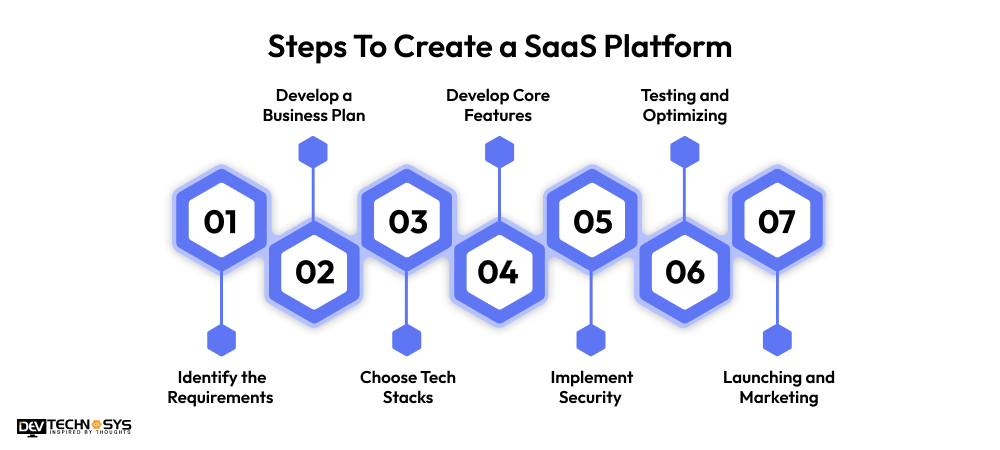
1. Identify the Requirements
In this first stage of development, identify your SaaS platform requirements and the types of cloud-based services you want to add to it. Conduct market research and observe what types of cloud-based services can be more popular and attract users. Define the targeted audience and their specific needs.
2. Develop a Business Plan
Let’s move to the second stage of development: hire dedicated developers to select the business plan that can convert your idea into a profit-generating SaaS platform. After that select the revenue model for your SaaS platform, such as the subscription model, freemium model, advertising, in-app purchase, and tiered pricing.
3. Choose Tech Stacks
In this third stage of development, tech stacks are a major part of the process, and it includes many advanced tech stacks. There are programming languages, database architecture, security measurements, designing, backend processes, and cloud infrastructure. This development stage plays a crucial role in the SaaS platform.
4. Develop Core Features
Entering the fourth stage of development, identify the basic features of your SaaS platform that must be installed and observe the existing SaaS platform features. You must also observe the paid features to attract more users, but these can increase the overall development. Also, identify the primary and secondary users of your SaaS platform.
5. Implement Security
In this fifth stage of development, to protect the user’s sensitive data, you need to apply robust security measures such as two-factor authentication and encryption. These are crucial development steps because, without security restrictions, third-party members can easily access your platform without user or admin permission. Also, industry standards such as HIPAA and GDPR should be applied.
6. Testing and Optimizing
Let’s move to the sixth stage of development: implement software testing services to test your SaaS platform using various testing methods and scan for bugs and glitches. Make sure that all services are working smoothly, and start user acceptance testing to receive real feedback from users. Check the platform’s performance so that it performs as expected.
7. Launching and Marketing
As development nears its end, assemble a highly skilled development team to release the SaaS platform with all implemented features or functions. After successfully publishing the platforms, it’s time to promote them globally using marketing strategies. These strategies involve email marketing, affiliate marketing, social media platforms, content marketing, and digital marketing.
Must-Have Features To Create A SaaS Platform
For a unique SaaS platform development, you must observe the various advanced functionalities. Increasing the user base can be profitable for businesses. So, here is the list of the premium features of the SaaS platform:
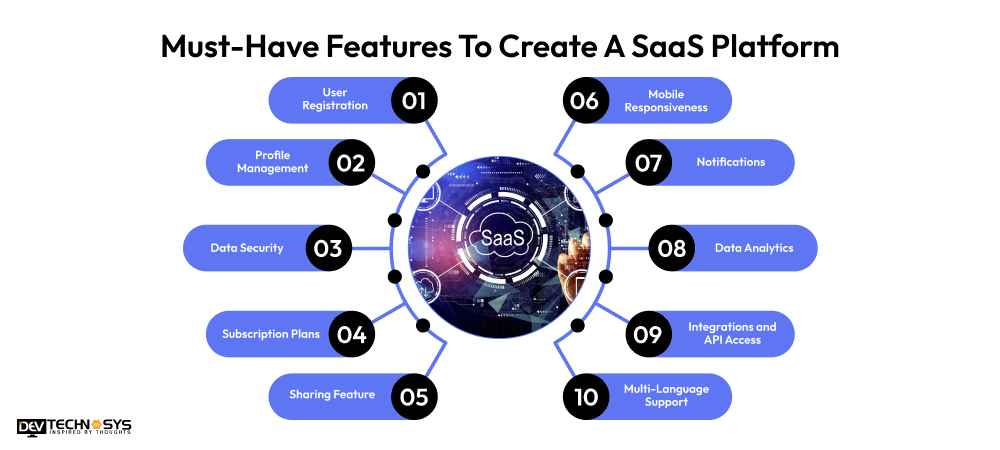
-
User Registration
A SaaS platform allows users to create a free account using their mobile numbers, social media platforms, or email and log in as guests.
-
Profile Management
This platform allows users to manage their profile actions, such as viewing their data analytics, usage stats, and personal information.
-
Data Security
It provides various security restrictions to protect the users’ sensitive data and ensures that both sides of the data are encrypted.
-
Subscription Plans
A SaaS platform offers premium paid subscription plans to access its interactive services, such as basic, premium, and enterprise.
-
Sharing Feature
This platform allows users to share, upload, and access the data and manage sensitive files in the platform’s storage area.
-
Mobile Responsiveness
The SaaS platform’s design is mobile responsive, allowing users to easily access it on mobile devices such as tablets and smartphones.
-
Notifications
This platform sends users alert messages, such as updates, system alerts, the arrival of new cloud-based services, and tasks.
-
Data Analytics
It allows users to display their data in real-time via graphs, charts, and reports and to create customized data reports.
-
Integrations and API Access
This platform allows integration with popular third-party tools and services and provides API access to integrate your SaaS platform with other tools.
-
Multi-Language Support
The SaaS platform offers multi-language support to users so they can easily change the app’s language at their convenience and flexibility.
The Cost To Create A SaaS Platform
The SaaS software development cost is basically around $8,000 to $25,000 and depending on the vital factors, that can fluctuate the overall development cost. It includes number of features, functions, size, complexity, infrastructure, deployment platforms, maintenance, and project requirements. SaaS application development cost can also depends on the various highly affected factors such as development team, developers location, third-party integrations, design, marketing, and security measurements. We provide the cost table for users or businesses to easily understand the app’s complexity and cost estimation:
| SaaS Platform Development | Estimated Cost | Time Frame |
| Basic Platform Development | $8000 – $14000 | 2 to 5 Months |
| Mid-Complex Platform Development | $14000 – $22000 | 5 to 8 Months |
| High-Complex Platform Development | $25000+ | 9+ Months |
The maintenance cost of the SaaS platform depends on advanced resources such as networking cost, software or hardware cost, user support, number of features, SSL certificate, and domain renewal. Basically, the maintenance cost is around 15% to 20% of the overall SaaS software development cost.
Major Challenges In SaaS Application Development
Businesses face many challenges in developing a robust SaaS platform, including all the functionality and responsiveness. There are many risks in cloud-based services, such as unexpected shutdowns or slowdowns and having a poor effect in front of targeted audiences. Here, we provide the major challenges of SaaS application development:
- Data Privacy and Security
- Scalability
- User Authentication
- Performance Optimization
- Integration with Third Party
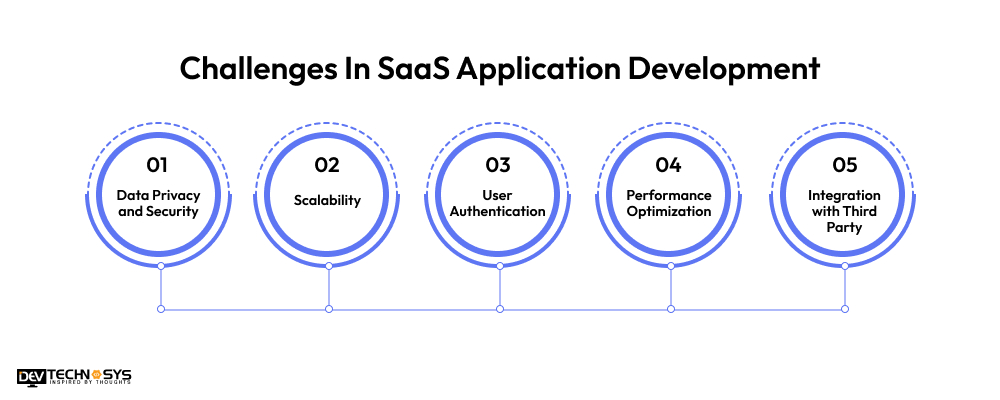
1. Data Privacy and Security
To begin with, the challenges with security and data privacy require SaaS platforms to follow robust security measures to prevent users’ sensitive data from being breached. Cloud-based services basically store users’ data, and users can access them from anywhere or anytime. For accessibility, they need to use encryption on both sides and implement security audits.
2. Scalability
The second challenge is that the demand for cloud-based solutions has increased in the past few decades, as has the number of users. A SaaS platform needs to handle a huge number of data and users without decreasing overall performance and speed. It must use several services to maintain performance, such as cloud-native services and autoscaling infrastructure.
3. User Authentication
Let’s move to the third challenge. Cloud-based solutions store users’ valuable data, which users can easily access. However, it is also important to ensure that no one can access the data without user permission. As we discussed with the enterprise product development company, SaaS platforms need to apply various access control services such as two-factor authentication, single sign-on, OpenID, token-based access, and RBAC.
4. Performance Optimization
As we show in the fourth challenge, the number of SaaS platform users has rapidly increased, and they store huge amounts of sensitive data in the cloud. Performance has decreased, and SaaS’s speed is low compared to other platforms. They must use various strategies or techniques to maintain performance and speed, such as network latency, CDNs, and database queries.
5. Integration with Third Party
In the last challenge, most SaaS platforms integrate with third-party services to offer advanced tools and functionalities, such as payment gateway integrations, customer relationship management services, APIs, and marketing tools. So, they need to also integrate with third-party services, using standard APIs for seamless integrations and applying error handling to reduce failures.
How Dev Technosys Will Help You?
The solution to this entire blog is that SaaS platforms provide advanced cloud services that allow users to easily access the applications without installing them on their devices. This blog has explained all the stages of SaaS development, which will help you know how and what to do in a successful platform development. Hopefully, you will quickly understand the features you need to install and how to face crucial challenges in robust SaaS platform development.
If you want to choose a SaaS application development company for on-time project delivery on a cost-effective budget. In that case, you must contact Dev Technosys, a leading SaaS app development company.
Frequently Asked Questions
1. What Is A SaaS Platform?
A SaaS platform is a cloud-based model that offers cloud services and allows users to access applications through a web browser over the Internet. Here are basic examples of cloud-based applications like email, calendaring, and office tools.
2. What Distinguishes A SaaS Platform From Regular Software Applications?
The main difference between SaaS platform applications and regular software applications is that SaaS platform applications are accessed through a web browser over the Internet, while regular applications are installed on a local computer server.
3. How Much Does It Cost To Build A SaaS Platform?
The SaaS software development cost lies between $8,000 to $25,000 or more. The cost depends on the various essential factors such as size, project’s requirements, functions, features, complexity, infrastructure, and deployment platforms.
4. How Long Does It Take To Create A SaaS Platform?
To create a SaaS platform takes 3 to 8 months, but it is divided into two parts: simple and complex. A simple platform takes 2 to 5 months, and a complex platform takes 8+ months. It depends on the project’s complexity and requirements.
5. Which Technologies Are Used To Create A SaaS Platform?
There are various technologies are used to create a SaaS platform, here is the list of the robust technologies:
- HTML, CSS, Java Script (Web Technologies)
- AWS, Microsoft Azure, Google Cloud (Cloud Platforms)
- Django, Node.js, (Web Frameworks)
